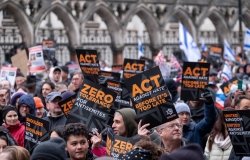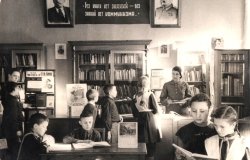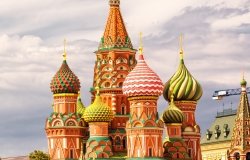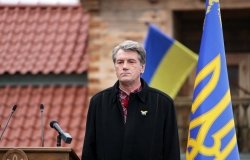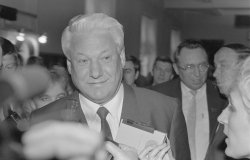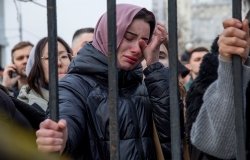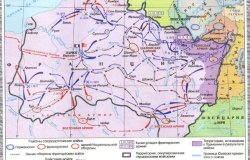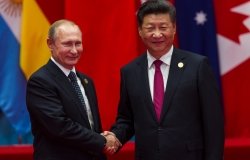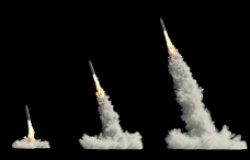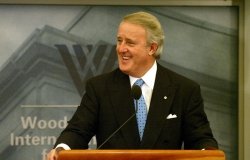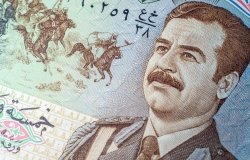Syngman Rhee: Socialist


To download this Working Paper, please click here.
CWIHP Working Paper 82
Syngman Rhee: Socialist
David P. Fields[1]
June 2017
“Communism is cholera and you cannot compromise with cholera” is the closest that Syngman Rhee came to giving posterity a memorable one-liner. These words still define Syngman Rhee as he is remembered today by both his friends and his enemies. The image of Rhee as a staunch right-wing anti-communist is the one that endures. To his supporters, Rhee’s anticommunism was his supreme virtue. They believe that he saw the dangers of communism early and prevented the southern half of Korea from being swallowed up as a Soviet client state.[2] To his critics his anti-communism lies at the root of the reactionary politics that fostered the division of Korea and suppressed a leftist social revolution on the peninsula. In the name of anticommunism, the Republic of Korea’s attempts at fostering democracy were dashed and the state morphed into a military dictatorship. The myth then of Rhee being a far-right-wing anticommunist has been beneficial to both sides. But is it true? By 1950, Syngman Rhee held explicitly anti-communist views, but were these the views that he held his whole life? Was anti-communism really at Rhee’s ideological core? Is anti-communism the same as right-wing politics?
This paper will make two claims that run counter to much of the received wisdom about Syngman Rhee’s political beliefs. First, it will argue that Syngman Rhee’s politics for most of his life were left-of-center at least according to the American understanding of the terms “left” and “right.” In fact Rhee’s beliefs for much of his life would have resonated more with the ideals of left-wing social democracy than with right-wing free-market capitalism. Second, it will argue Rhee’s anti-communism was more instrumental than philosophical. In fact, for much of his life, it would be more accurate to describe Rhee as anti-Soviet rather than anti-communist. Finally, it will suggest that the most salient aspect of Rhee’s ideology was his commitment to Korean independence, a commitment that lasted his whole life since he believed that a divided Korea was not an independent Korea. Nearly everything in his mind was subordinated to this. This was his one consistent ideological test. Would any given ideology, politics, or strategy further the cause of Korean independence?
The title of this paper is somewhat misleading. It will not argue that Rhee was in fact a socialist. However, it will argue that labeling Rhee a socialist would actually be a more accurate description of his politics for most of his life than labeling him a right-wing anti-communist. To make this argument, I will look at three topics: Rhee’s associates, his writings, and his policies.
Rhee’s Associates
One of the most surprising discoveries divulged by Rhee’s diary, published in 2015, was how many of his friends, associates, and influences where left-of-center or even socialist. The American missionaries who were responsible for Rhee’s western education were theologically conservative, but they were also social reformers.[3] It was through them that Rhee first encountered socialistic thought. During his five years of imprisonment, Rhee’s missionary friends kept him well-stocked with various reading materials including Lyman Abott’s weekly magazine The Outlook.[4] In his excellent study of Rhee’s experience in prison, Professor Chong-sik Lee devotes several pages to describing the importance of The Outlook to Rhee’s intellectual development. Rhee appears to have read fifty issues of the magazine and Lee claims that “Abbott effectively became Rhee’s teacher and spiritual guide.”[5] While Professor Lee correctly describes Abbott’s liberal theological beliefs, he somehow overlooked the fact that Abbott was also a devoted socialist. During the period of Rhee’s incarceration, The Outlook ran no fewer than 25 articles with “socialism” or “socialist” in the title. A keyword search over the same period reveals that more than 180 articles at least referenced socialism.[6]
Abbott was a socialist of the Christian and non-radical variety and devoted The Outlook to the cause of social reform. Abott’s socialism emphasized the gradual transformation of government and industry beyond the “wage system” and into an economic arrangement where the “spirit of brotherhood” taught by Jesus Christ would become a reality. In a 1908 editorial on socialism, Abbott made a key distinction between what he called democratic socialism and state socialism. What Abbot calls state socialism in this editorial is more akin to communism, with the means of production and all property communally owned and all workers employed by the state. Abbot condemned this type of socialism as impractical and also unjust, as he believed workers would be deprived of the freedom to choose their vocation and better themselves until they reached their full potential as human beings. Democratic socialism on the other hand, was evolutionary; ownership of most property would remain in private hands, but the state would intervene to ensure equal educational opportunities, upward mobility, and an equitable distribution of wealth.[7]
Through Abbott’s The Outlook and his missionary teachers, Rhee was exposed both to the conservative and liberal strains of American Christian thought. That Abbott’s ideas had more practical impact on Rhee’s than his missionary teachers is undeniable. Whether working for the YMCA in Seoul in the 1910s or at the Korean Christian Institute in Hawaii in the 1920s and 1930s, education and social reform were the hallmarks of Rhee’s activities, not proselytizing.
Rhee’s next documented encounter with socialism was by way of Finnish nationalist Aino Malmberg. When Koreans learned that Malmberg—“a famous Finnish nationalist leader”—would pass through Hawaii on her way to New York to attend a meeting of the League of Small and Subject Nationalities (LSSN) in 1917, they called a special meeting to receive her. Her account of the Fins’ attempts to free themselves from Imperial Russia made a “deep impression on the minds of the Koreans who attended the meeting.”[8] Malmberg urged them to also send a representative to the LSSN conference, which they did. Rhee did not make the trip himself, however, he agreed to be listed on the LSSN’s council as the official representative of Korea. Rhee may or may not have been aware that Malmberg was a socialist. He probably did not know that she had used her travels between Scandinavia and the United States to smuggle funds to Russian revolutionary Leon Trotsky then in exile in New York.[9] However, he could hardly have been unaware that the LSSN’s leadership contained a number of prominent leftist and pro-Soviet figures such as Lincoln Steffens, W.E.B. Du Bois, Lajpat Rai, and Frederik C. Howe, or that it championed the cause of the Russian Revolution as well as the rights of oppressed nationalities.[10] LSSN’s politics were probably unimportant to Rhee, in so much as it offered Koreans a chance to publicize their national aspirations at a moment when many observers believed the plight of colonized peoples was becoming prominent. Even if Rhee had been an ideologue, this was no time for ideological purity.
Rhee could certainly not claim ignorance when he hired one Laurance Todd to work as the publicity agent of the Korean Commission—a quasi-embassy for the Korean Provisional Government established in Washington, D.C. in 1919.[11] Rhee must have been aware that Todd was a socialist before he hired him since Todd was previously the secretary of Meyer London, one of only two members of the Socialist Party of America to be elected to congress. At the same time he was working for Rhee he was also a reporter for The Non-Partisan Leader, which was the organ of the Non-Partisan League, a leftist populist political party advocating for state ownership of financial and industrial assets in the rural Midwest. Todd was unique among Rhee’s left-of-center friends because he would actually become a communist; he would spend almost thirty years as the Soviet TASS news agency’s correspondent in Washington, D.C. Only one letter from Todd to Rhee, dated 30 December 1919, survives but it reveals that Todd was an ardent supporter of the Russian Revolution and hints that Rhee may have been optimistic about the revolution as well:
“Meanwhile the sands of a new hour in history for both hemispheres have run, and as they have run my own hopes—and I think yours, too—have risen to confidence, that the time of a vast liberation is at hand. One need not be a warm sympathizer with Soviet Russia—as you know I am—to feel that the extension of Soviet power is the most potent fact in human affairs since August 1914. Indeed it seems the most momentous shift in power since the French Revolution. Its influence upon Asia and notably upon Korea, we need hardly mention.”[12]
Although Todd did not work for Rhee long, they remained in touch. In 1933, the Soviet Embassy sent Todd on a courtesy call to thank Rhee for a letter of congratulations Rhee sent the Soviet Embassy after their normalization of relations with the United States.[13]
Over time Rhee and Todd came to occupy positions in rival ideological camps. In 1954 Todd wrote two articles attacking then President Rhee in the leftist New World Review. Without acknowledging he had worked for Rhee in the late 1910s, Todd revealed that Rhee had “hinted at sympathy with the Russian Revolution” in his early days in Washington, but had later converted to fascism after a visit to Hitler’s Germany.[14] Todd’s latter claim is untrue. Rhee’s only visit to Germany was in 1910, well before Hitler’s rule. A few months later Todd reviewed Robert T. Oliver’s biography of Rhee, The Man Behind the Myth, for the Review. It was not a positive review. Again without revealing that he personally knew Rhee, Todd criticizes Oliver for leaving out portions of Rhee’s biography, such as his impeachment by the Korean Provisional Government. Todd also criticized Oliver’s characterization that Rhee’s 1933 trip to Moscow was made only after Rhee was rebuffed by the League of Nations. To the contrary Todd claimed that Rhee had been working for months to secure a visa to the Soviet Union in order to propose a “grand alliance” between himself, Stalin, and Chiang Kai-shek against the Japanese.[15] Todd’s connection to the Soviet embassy as a journalist may have put him in a position to know such details.
Todd was hardly Rhee’s only left-of-center associate. In 1934 Rhee started a magazine titled Orient with longtime friend, Charles Edward Russel. Russell was a journalist, a Pulitzer Prize-winner, and the author of books such as Why I am a Socialist, Socialism the Only Remedy, and The Passing Show of Capitalism.[16] Russell, like Lyman Abbott, was by no means a radical. He came to socialism by way of muckraking journalism—investigating the corrupt practices of many of the United States’ richest individuals and most valuable companies. Russell’s interest in socialism also appears to have been more pragmatic than doctrinaire. His 1919 book Bolshevism and the United States showed as much sympathy for Russian peasants as it did thinly veiled contempt for the Bolshevik project. Bolshevik ideas were vague and unworkable in Russell’s opinion, especially the abolition of private property and the dictatorship of the proletariat. Russell was in favor of a “social revolution” but not one that would result in “chaos.”[17] Russell was also opposed to putting the interests of the international socialist movement ahead of the nation. He would be expelled from the Socialist Party of America for his support of the U.S. entry into World War I.
Although Russell was credited as the editor of Orient, Rhee and another life-long friend, Homer B. Hulbert, did most of the work in New York while Russell was bedridden in Washington.[18] The magazine was not a success, appearing to have had a run of just two issues. However, the single surviving issue contains both an editorial praising Franklin D. Roosevelt’s decision to reestablish relations with the Soviet Union and also the first installment of a serialized novella titled The Broken Net, which, at least judging by the first chapter, is a tale about well-healed American adventurers making contact with Korean guerilla fighters in Japanese controlled Manchuria.[19] Given that most of the guerilla fighters in Manchuria had close connections with the Chinese communist party, it would have been fascinating to know how that story ended.[20]
In addition to Todd and Russell, Rhee had other friends and associates who were left-of-center. The socialist Unitarian minister John Haynes Holmes presided at Rhee’s wedding in 1934.[21] Sherwood Eddy, a close friend from the YMCA who brought Rhee to the attention of American audiences by including Rhee’s biography in his book The New Era in Asia, publically joined the Socialist Party of America in 1931. Robert T. Oliver claims that Norman Thomas, the perennial socialist presidential candidate, was an ardent supporter of the Korean cause and this is supported by Thomas’ letters to the Korean Commission. [22] He was one of the few American socialist who publicly supported Rhee and the American intervention in the Korean war.[23] Senator William Langer, who spoke out passionately against surrendering Korea to the Soviet Union on the Senate floor in 1945 had been part of the leftist Non-Partisan League in the 1920s.
That Rhee would keep company with left-of-center Americans is hardly surprising given the historical context of race relations in the United States—with the left generally being less exclusionary than the right. However, what drew Rhee to these individuals was not their racial politics, nor their socialism. It was rather that each was willing to assist him in his struggle for Korean independence. Their socialism may or may not have been a point of attraction for Rhee, but it certainly was no barrier to partnership.
Rhee’s Writings
Over his lifetime, Rhee produced a prodigious body of writing, much of it correspondence and surprisingly mundane. Rhee’s writing was mainly organizational or administrative. Little of it is either philosophical or political. However, what he did write about politics is revealing.
His most important piece is a short article he wrote in his Pacific Magazine called “Communism: Right and Wrong” in March 1923.[24] It will come as a surprise to those familiar with the anti-communism of Rhee’s later life that in this article he spends almost as much time describing what communism got right as what it got wrong. The most favorable aspect of communism to Rhee was its acknowledgment of the equal value of all human beings. Rhee’s frame of reference for this judgment was the rigid caste system of late-Joseon Korea. Rhee lamented how in the Korea of his birth average Koreans, no matter how talented, had to consider “fools and idiots of noble blood as their superiors.” He wondered how much human capital was wasted because of such prejudice. Had Rhee stopped there, this would not be an endorsement of communism. Many ideologies, including capitalism, could make the same critique of rigid caste systems. But Rhee continued that while systems such as the Joseon caste system were disappearing, new forms of slavery were taking their place. Rhee complained that while slavery was nearly universally illegal “in the name of salary and wages people could still be made to live the life of a slave.” It was this desire to make people more equal, both philosophically and materially, that Rhee considered the positive aspects of communism.
Rhee’s critiques of communism focused on the methods communists used to achieve this equality. Rhee believed that the public ownership of all property was impractical and would lead to resources being given to those who had neither the skills nor the desire to use them. He also believed that destroying the capitalist class and the intelligentsia would retard economic and social development. The solution to these class divisions was to remove the barriers to entry into these classes through education. Although the article is too short for Rhee to develop his ideas fully, it is apparent that Rhee could see both the excesses of communism and unrestrained capitalism. It should be no surprise that Rhee’s views in this article correlate with those of Lyman Abbott and Charles Edward Russell: critical of the status quo, but also of radical alternatives to it.
His final critiques focused on communism’s attacks on two institutions that he had spent his life building up: religion and nationalism. Rhee acknowledged that organized religion had not always been a progressive force in world history but argued that Christianity, particularly Protestantism, was a means of developing “equality and freedom” and that churches were essential to developing human virtue. To Rhee, communism’s animus towards nationalism was incomprehensible. Rhee could not envision Korean society organized around anything other than ethnic nationalism at that historical moment. He wrote that as long as the Japanese were occupying Korea, Korean nationalism was indispensable. The time to discuss the merits of nationalism would come once the Japanese were expelled and not even the “silhouettes” of their warships could be seen from Busan harbor.
In the final paragraph of this article Rhee elucidated his core ideological conviction, one that remained more or less consistent throughout his life: “To us Koreans, the most urgent, the most important, and the biggest issue is liberation activities. If Communism will help this work we should all become communist without delay, but if this work seems to be damaged by communism we can never agree to it.” Rhee’s approach to communism could not be more clearly stated. He approached it not with an ideological lens, but with a pragmatic one.
When asked by a supporter in 1928 about employing revolutionary violence, seeking the support of the Soviet Union, and nationalizing industries as a matter of economic policy, Rhee’s response was similarly pragmatic, except on the question of violence. Rhee claimed there was no room for the word “revolutionary” in the Korean independence movement and that he was opposed to revolutionary violence. However, Rhee made clear that he would contact the Soviet Union if given the chance, but “it is difficult for me, given the fact that I am implementing the Korean independence movement from the United States, to promote communism.” There is a certain ambiguity in Rhee’s statement. Would he have preferred to promote communism had he not been in the United States? Almost certainly not. But Rhee wanted to make clear to his correspondent that he neither categorically embraced nor condemned communism, but rather “it is more important for us to find our own survival strategy first.”[25] Rhee was certain this survival strategy would not include revolutionary violence or fomenting class struggle, but he was equally certain that writing off potential allies, such as the Soviet Union, for ideological reasons was foolish. His 1933 visit to Moscow seeking aid for Korea’s independence proves that this was not idle talk.[26]
When Rhee returned to Korea in October 1945 he continued this pragmatism towards communists, at least initially. Only a few days after he arrived in Seoul, he wrote a letter to his wife, Francesca, and supporters expressing surprise that he had been chosen by Korean leftists to head the nascent Korea People’s Republic (KPR). He wrote that in response he had told them that “it is a high honor to be a communist leader, while Moscow condemns me as anti-communist.”[27] While Rhee was hesitant to actually accept the position offered to him by the KPR he was careful not to alienate any potential supporters, be they communist or not. Rhee understood that communist supporters might prove valuable both in attempts to remove the Soviet Union from the peninsula and also to see off political rivals. In a letter to Rhee later that month Francesca encouraged Rhee that he had little to fear from Jacob K. Dunn and other returning members of the United Korean Committee—a rival Korean exile organization that Rhee believed had hampered his own diplomatic efforts in Washington during World War II—because “as long as you have communist support they can do all the harm but it will be rather difficult [for them] to get hold of the government.”[28] It would seem then that Rhee and his closest supporters took the possibility of communist support seriously.
Perhaps with the possibility of communist support in mind, Rhee told the New York Times in November 1945 there were two types of communists in Korea: those who wanted to establish a communist government and those who believed “that some of the economic principles of communism will be beneficial to our people.” He claimed that he believed in “some communist ideas” and that after a Korean government was established he would “work for the adoption of many of these theories.”[29] This was not just rhetoric. Letters between Rhee and Francesca reveal that Rhee had spent his time in exile discussing progressive reforms. When Rhee wrote in November 1945 that his popularity after arriving in Seoul was so great that even the communists were supporting him, Francesca responded, “I shall be the first one to join the communist [sic] under your leadership. I think it is wonderful that they choose [sic] you as their leader. I begin to think that you and I have mapped out all the social reforms which would impress the communists more then [sic] anything else. I do believe in the social reforms which enable the working class a decent existence. You remember what dept. you have promised me—This and many ther reforms have to be taken place in order to get the votes of the working class.”[30] Social reforms appear to have been a topic of some conversation in the Rhee household; references to communism as cholera are conspicuously absent.
Rhee’s Policies
Even as the relationship between Rhee and Korean communists deteriorated in post-liberation Korea, he continued to champion progressive social reforms. In February 1946 Rhee broadcasted a twenty-seven-point “national program” as chairman of the Representative Democratic Council of South Korea. The program included proposals to nationalize all heavy industries, mines, forests, public utilities, etc.; “to inaugurate state supervision of all commercial and industrial enterprises to insure fair treatment to consumers, traders, and producers alike”; to redistribute “all confiscated agricultural lands to small farmers in accordance with their capacity and ability to work them”; to break up “large private estates” and redistribute the land to small farmers; to control interest rates; to make the tax system, including inheritance taxes, more progressive; to implement unemployment and social security insurance; to promulgate minimum wage laws; and to establish “state control of medicine and to provide adequate public health facilities to the benefit of all workers.”[31] Many of these ideas would pass directly into the first constitution of the Republic of Korea. After reviewing the Korean constitution as it came into effect in July 1948, political scientist Paul Dull wrote that it “ostensibly makes the Korean Republic a socialistic state.” The question for Dull was what type of socialism future legislation would create.[32] The American Military Government’s own chief legal adviser, Czech émigré Charles Pergler, agreed stating that the document leaned “strongly towards state socialism” and seemed to draw inspiration from the Weimar constitution.[33]
Rhee’s first Liberation Day speech as president in 1948 contained similar ideas about social welfare: “The employer must not, and will not be permitted to exploit labor. Labor must not expect, and will not be permitted to destroy capital.” Rhee argued that the goal of his administration was to elevate the living standards of all Koreans, but to do so without pitting one class against another, as the communists did. In the same speech he continued to make distinctions between those who supported the economics of communism and those who supported Soviet communism: “We are not so much against Communism as against the treason of its devotees” he told his audience. [34]
Although progress was halting and Korean living standards would take decades to rise significantly, Rhee would remake Korea’s social fabric through a major land reform program in the 1950s. This land reform is possibly the most significant policy of Rhee’s tenure as president of the Republic of Korea, and yet it is frequently overlooked. This is partially because the land reform took years to execute and was plagued by mismanagement—as nearly every aspect of Rhee’s administration was. Loopholes in the law allowed some land owners to hang on to large swaths of their property by recategorizing it or by incorporating it with an institution whose land was exempt from the reform, such as a school.[35] Rhee’s land reform was also interrupted by the Korean War, which meant that it was not fully implemented until the late 1950s. Initially this land reform seemed to compare unfavorably with similar land reforms undertaken in North Korea and China because the landlords were compensated; the tenants had to pay for the land in installments over five years; and the process of redistribution took years. Rhee’s land reform was indeed less radical. It was also more complex. Because it was undertaken within a system of private ownership and under the auspices of a democratic government—in 1949 and 1950 Rhee was far from all-powerful—Rhee’s land reform had to go through painstaking legislative and budgetary processes. The fact that many Korean legislators were also large landholders did not make the process any easier. Such assemblymen both attempted to delay the bill and increase the amount of compensation for landlords. Rhee himself also delayed the implementation of the bill by sending it back to the National Assembly for redrafting after the convoluted amendment process had saddled the bill with some contradictory and sloppy language.[36]
Despite its shortcomings, Rhee’s land reform fundamentally remade Korean society by breaking up large estates, destroying Korea’s landed aristocracy, and giving a modicum of security to millions of Korean farmers and laborers. In 1945, two-thirds of arable land in Korea was owned by just 3 percent of the population and 80 percent of rural Koreans owned no land at all. By 1957, war and land reform had nearly reversed that statistic: 88 percent of rural Koreans owned land.[37] Some scholars have claimed that Rhee had land reform pushed upon him by circumstances or that his land reform accomplished little.[38] The momentum behind land reform in post-liberation Korea was indeed strong, but there is no evidence that Rhee tried to resist it. On the contrary, Rhee was a stalwart of land reform as he understood it was both in the national interest and his own political interest. It forestalled the desire for more radical solutions among South Korea’s agrarian poor and also provided Rhee and his Liberal Party with a base of popular support.[39] This land reform was not a sufficient condition for Korea’s future development, which was still a long way off, but it was a necessary one.
Rhee’s left-of-center economic policies were evident in more than just land reform. For much of his presidency large swaths of the Korean economy would remain in government hands. This did not go unnoticed in the United States. In the mid-1950s Rhee had to fend off an onslaught from certain members of the U.S. Congress, such as Allen Ellender and Paul Shafer who accused Rhee of socialism because the state owned so much of the Korean economy. Shafer proposed legislation twice in 1954 that would have prohibited aid to Korea from being expended in ways that would “continue the present socialized status” of the Korean economy.[40] Rhee could not deny these claims, but rather defended himself by claiming the government wanted to divest itself of most of these properties but was forced to hang on to them to prevent them from being sold at rock bottom prices. Rhee believed he had a responsibility to see that sources of “national strength” did not fall into the hands of the “old ‘ruling class.’”[41] This was hardly reassuring to American free market ideologues. It did not help that one of Rhee’s cabinet-level ministries was known as the “Office of Monopoly” and oversaw government monopolies in tobacco, salt, and ginseng.[42]
Charges of socialism were not just made by Rhee’s detractors. Robert T. Oliver, Rhee’s longtime friend, adviser, and biographer, explained that while Rhee was certainly anti-communist, he was otherwise politically promiscuous. He wrote that Rhee believed that the alternative to communism was whatever means and methods worked best to safeguard “human rights and dignity,” including representative democracy, aristocracy, “state socialism,” or some “amalgamation” of all of these.[43] One does not have to look too hard to find all three of these in Rhee’s administration.
Conclusion
If Rhee was in fact not an extreme right-winger, where does this idea come from? While it is difficult to pin down precisely when Rhee was first labeled a “right-winger”, the origins seem fairly clear. It appears it was the American military government that first began identifying Rhee as a member of the “extreme-right” in Korea. They did so, however, not because of his social, economic, or political beliefs, but as a way to discredit his anti-Soviet, anti-trusteeship stance during a period when American personnel desperately wanted trusteeship to work—or, at least, to avoid being blamed for its failure. This labeling of Rhee would come back to haunt them when circumstances forced them to cooperate with Rhee and other members of the so-called “extreme-right.” When the State Department instructed the military government in 1946 to find someone not on the extreme-right to cooperate with—someone who would support land and social reforms—an exasperated analyst responded: “Analysis of Korean political situation must be with the realization that programs of all political parties will be quite socialistic and definitely left from United States’ point of view. Generally speaking, Korean political thought is divided on only one basic issue and that is Communism.”[44] The labels “left” and “right” were already causing confusion at the beginning of the American occupation.
The situation did not improve over time. In a classified 1948 report on Korean politics since liberation the American Central Intelligence Agency (CIA) had to explain to its readers—presumably high-level American policymakers—that “as an arbitrary measure coalitions favoring trusteeship have been classified as the Left Wing; all opposing trusteeship as the Right Wing.” This was hardly an arbitrary measure. The CIA was following the nomenclature already chosen by the American military government. However, the CIA was right to recognize that the terms “left” and “right,” as they were being applied in Korea, would mislead any American policymakers unfamiliar with the Korean situation. The report continued “All South Korean parties seem, moreover, agreed that the future Korean government must nationalize the industries and redistribute the land. This socialistic program is common property of both right and left, for there are apparently no articulate proponents of capitalism among the Koreans."[45] From the American perspective, they were all leftists.
I have somewhat cheekily titled this paper “Syngman Rhee: Socialist.” The label does not quite fit Rhee, but it is no more ill-fitting than the label of “extreme-rightist.” I hope this provocation will cause a reexamination of Rhee, post-liberation Korean politics, and the United States’ role in this era of Korean history. For more than a generation the dominant narrative of this period has been that the United States empowered reactionary, right-wing leaders to take control of a Korean nation that was solidly moving in a leftward direction. If Syngman Rhee was neither as reactionary nor as right-wing as is often supposed, then it is necessary to look beyond the left-right paradigm to discover the ideas, fears, and aspirations that divided Koreans during this period and, when augmented by international intrigue, sparked the on-going Korean War.
David P. Fields earned his Ph.D. in U.S. diplomatic history at the University of Wisconsin–Madison in 2017 and is currently a Fulbright scholar at Yonsei University. His manuscript “Foreign Friends: Syngman Rhee, American Exceptionalism, and the Division of Korea” examines how Korean independence activists used the rhetoric of American exceptionalism to lobby for Korean independence in the first half of the 20th century. He is the editor of The Diary of Syngman Rhee, published by the Museum of Contemporary Korean History, and the book review editor of the Journal of American-East Asian Relations. He has been published in the Journal of American-East Asian Relations, North Korea Review, SinoNK.com, and Transaction of the Royal Asiatic Society-Korea Branch.
Suggested Citation: David P. Fields, "Syngman Rhee: Socialist" Cold War International History Project Working Paper 82 (June 2017), accessible at https://www.wilsoncenter.org/publication/syngman-rhee-socialist.
[1] This paper was previously published in Transactions of the Royal Asiatic Society-Korea Branch 91 (2016): 93-108.
[2] This claim was most recently made in a bilingual comic book aimed at teaching young Koreans, both at home and abroad, about the founding of the Republic of Korea. See Korean History Forum USA, The Birth of Korea: Miracle Years, 2016, 56–57; For a more scholarly statement of this argument, see Lee Sang-Hoon, “Syngman Rhee’s Vision and Reality: The Establishment of the Nation and Thereafter,” Review of Korean Studies 14, no. 3 (2011): 33–60; Some of Rhee’s supporters claimed his anti-communist views stretched back to the Russian Revolution. See Robert T. Oliver, Syngman Rhee and American Involvement in Korea, 1942-1960: A Personal Narrative (Seoul: Panmun Book Co, 1978), 352.
[3] This is especially true of Henry Appenzellar, the founder of Paichai Middle School where Rhee began his western education. See Henry Gerhard Appenzeller and Henry D Appenzeller, The Appenzellers: How They Preached and Guided Korea into Modernization: Sermons, Prayers, and Memoirs of Henry G. and Henry D. Appenzeller, vol. I (Daejeon, Korea: Pai Chai University Press, 2010); Daniel M. Davies, “Building a City on a Hill in Korea: The Work of Henry G. Appenzeller,” Church History 61, no. 4 (December 1, 1992): 422–35, doi:10.2307/3167795.
[4] Robert T. Oliver, Syngman Rhee: The Man Behind the Myth (New York: Dodd Mead, 1954), 21.
[5] Chong-sik Lee, Syngman Rhee: The Prison Years of a Young Radical (Seoul: Yonsei University Press, 2001), 55.
[6] This information was ascertained by searching the holdings of The Outlook available at < http://www.unz.org/Pub/Outlook>. [Accessed 11 May 2017]
[7] Lyman Abbott, “Socialism,” The Outlook, March 7, 1908.
[8] Syngman Rhee, “The 1919 Movement,” n.d., “March First Movement” Folder, Syngman Rhee Institute (SRI), Seoul, South Korea
[9] Richard B. Spence, “Hidden Agendas: Spies, Lies and Intrigue Surrounding Trotsky’s American Visit of January–April 1917,” Revolutionary Russia 21, no. 1 (June 2008): 42, doi:10.1080/09546540802085511.
[10] “Small Nation Citizens in the U.S. Greet Russians,” The New York Call, March 1, 1918.
[11] David P. Fields et al., eds., The Diary of Syngman Rhee (Seoul, South Korea: National Museum of Contemporary Korean History, 2015), 104.
[12] Laurence Todd to Syngman Rhee, 30 December 1919, Young-ick Lew, ed., The Syngman Rhee Correspondence in English, 1904-1948, vol. 2 (Institute for Modern Korean Studies, Yonsei University, 2009), 320–22.Emphasis added.
[13] Fields et al., The Diary of Syngman Rhee, 282.
[14] Laurence Todd, “Syngman Rhee: Myth and Record,” New World Review 22, no. 6 (June 1, 1954): 27.
[15] Laurence Todd, “Dressing Up History for Rhee (Book Review),” New World Review 22, no. 9 (September 1, 1954): 28.
[16] Charles Edward Russell, Why I Am a Socialist (New York: Hodder & Stoughton, George H. Doran Co., 1910); Charles Edward Russell, Socialism the Only Remedy (New York: Socialist Party, 1912); Charles Edward Russell, The Passing Show of Capitalism (Girard, Kan.: The Appeal to Reason, 1912).
[17] Charles Edward Russell, Bolshevism and the United States (Bobbs-Merrill Company, 1919), 307.
[18] Fields et al., The Diary of Syngman Rhee, 285–86, 292.
[19] “The Broken Net,” Orient, September 1934.The only extant copy of Orient is held by Columbia University.
[20] One such fighter was Chang Chi-rak (alias Kim San) who came to prominence thanks to Helen Foster Snow, Song of Ariran: The Life Story of a Korean Rebel. (New York: The John Day Company, 1941).
[21] Fields et al., The Diary of Syngman Rhee, 256.
[22] Young-ick Lew, ed., The Syngman Rhee Correspondence in English, 1904-1948, vol. 6 (Institute for Modern Korean Studies, Yonsei University, 2009), 244; Oliver, Syngman Rhee and American Involvement in Korea, 1942-1960, 102.
[23] Stanley Sandler, The Korean War: An Encyclopedia. (Taylor and Francis, 2014), 21.
[24] Syngman Rhee, “공산당의 당부당 (當不當) [Communism: Right and Wrong],” 태평양잡지 [The Pacific Magazine], March 1923. I am in debted to Professor LEW Seok-choon for bringing this article to my attention and for translating it into modern Korean orthography. The translations into English are my own.
[25] Sang-Hoon, “Syngman Rhee’s Vision and Reality”; The translation is from Lee Sang-hoon’s article. For the original mixed script letters between Rhee and supporter Yu Chi-yeong see Yu Yeong-ik et al., eds., 이승만 동문 서한집 [The Correspondence of Syngman Rhee in East Asian Languages], vol. 3 (Yonsei University Press, 2009), 129–45; Yu Yeong-ik et al., eds., 이승만 동문 서한집 [The Correspondence of Syngman Rhee in East Asian Languages], vol. 1 (Yonsei University Press, 2009), 92–93.
[26] I do not go into any detail about Rhee’s trip to Moscow here because the trip was an utter failure. Rhee was asked to leave by the Soviet government less than twenty-four hours after he arrived in Moscow. See Fields et al., The Diary of Syngman Rhee, 210–23.
[27] Rhee to unspecified supporters, 21 October 1945, Byeong-jun Jeong, ed., 이승만관계서한자료집 [Correspondence and Materials Related to Syngman Rhee], vol. 1 (National Institute of Korean History, 1996), 56–57.
[28] Francesca Rhee to Syngman Rhee, 6 November 1945, Young-ick Lew, ed., The Syngman Rhee Correspondence in English, 1904-1948, vol. 3 (Institute for Modern Korean Studies, Yonsei University, 2009), 421.
[29] Richard J. H. Johnston, “Korean Red Group Assailed by Rhee,” New York Times, November 22, 1945.
[30] Francesca Rhee to Syngman Rhee, November 12, 1945, Lew, The Syngman Rhee Correspondence in English, 1904-1948, 2009, 3:435.
[31] A copy of this program was transmitted to the State Department by the chairman of the Korean Commission, Ben C. Limb, in June 1948. Limb explained to the department that, even though it was proclaimed in 1946, Rhee had espoused it ever since. See Limb to Niles W. Bond, June 10, 1948, 895.01/6-1048, 美國務省韓國關係文書 [Internal affairs of Korea, 1945-1949], vol. 9 (Seoul: Areum Press, 1995), 488–89.
[32] Paul S. Dull, “South Korean Constitution,” Far Eastern Survey 17, no. 17 (1948): 205–7, doi:10.2307/3021545.
[33] Pregler’s analysis can be found in Joseph E. Jacobs to Secretary Marshall, 26 July 1948, 895.011/7-2648, 美國務省韓國關係文書 [Internal affairs of Korea, 1945-1949], vol. 10 (Seoul: Areum Press, 1995), 257–68.
[34] A copy of this speech was transmitted to the State Department in Joseph E. Jacobs to the Secretary of State, August 15, 1948, 895.01/8-1548, no. 669, 美國務省韓國關係文書 [Internal affairs of Korea, 1945-1949], 9:538–45.
[35] Yong-Ha Shin, “Land Reform in Korea, 1950,” Development and Society 5 (1976): 20, 24.
[36] Young-Cheol Zeon, “The Politics of Land Reform in South Korea.” (Ph.D., University of Missouri - Columbia, 1973), 179.
[37] Gi-Wook Shin, “Neither ‘Sprouts’ nor ‘Offspring’: The Agrarian Roots of Korean Capitalism,” in Transformations in Twentieth Century Korea (London: Routledge, 2009), 54.
[38] Zeon, “The Politics of Land Reform in South Korea.,” 211; Jong Won Lee, “The Impact of the Korean War on the Korean Economy,” International Journal of Korean Studies 5, no. 1 (2001): 97–118.
[39] Shin, “Neither ‘Sprouts’ nor ‘Offspring’: The Agrarian Roots of Korean Capitalism,” 58.
[40] Shafer proposed this legislation on 22 March and 20 July 1954 as H. Con. Res. 219 and H. Con. Res. 256. Both were purposed in the 2nd Session of the 83rd Congress.
[41] The Rhee administration devoted an entire issue of its Korean Correspondent publication to answering this charge, see The Korean Correspondent 39, 23 October 1955 in the Syngman Rhee Presidential Papers, File 327, Central Library, Yonsei University.
[42] “Consolidated Activity Report,” December 1956, The Syngman Rhee Presidential Papers, File 339, Central Library, Yonsei University.
[43] Oliver, Syngman Rhee and American Involvement in Korea, 1942-1960, 391–92.
[44] United States and Far East Command, History of the United States Armed Forces in Korea., vol. 2 (Seoul, South Korea: Dolbegae, 1988), 184–85.
[45] “Korea,” 2 January 1948, CIA-RDP78-01617A001400030001-2, CIA CREST Database, pages I-4, I-7–8.
About the Author

David P. Fields
David P. Fields is the associate director of the Center for East Asian Studies at the University of Wisconsin–Madison, and the author of Foreign Friends: Syngman Rhee, American Exceptionalism, and the Division of Korea.
Read More
Cold War International History Project
The Cold War International History Project supports the full and prompt release of historical materials by governments on all sides of the Cold War. Through an award winning Digital Archive, the Project allows scholars, journalists, students, and the interested public to reassess the Cold War and its many contemporary legacies. It is part of the Wilson Center's History and Public Policy Program. Read more

History and Public Policy Program
The History and Public Policy Program makes public the primary source record of 20th and 21st century international history from repositories around the world, facilitates scholarship based on those records, and uses these materials to provide context for classroom, public, and policy debates on global affairs. Read more

North Korea International Documentation Project
The North Korea International Documentation Project serves as an informational clearinghouse on North Korea for the scholarly and policymaking communities, disseminating documents on the DPRK from its former communist allies that provide valuable insight into the actions and nature of the North Korean state. It is part of the Wilson Center's History and Public Policy Program. Read more
